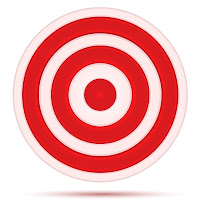 |
| Keattikorn/freedigitalphotos |
Before the mid 1960's, not many things came in plastic containers; it was just too costly. As soon as they developed a cheaper way, the packaging world changed quickly. No more shattered infant bottles when they dropped on the floor. (I remember my mother-in-law telling me she decided her little boy, my future husband, was ready for a cup when he threw his third bottle that shattered on the hardwood floor.) Plastics offered a win-win situation, right? Light-weight, lower shipping costs. But is there another cost?
Of particular concern is bisphenol A (BPA) which has been used for over 40 years to make polycarbonate plastic and epoxy resins, making baby bottles, reusable cups, linings for metal cans and food containers, canned infant formula, and even some dental sealants.
In 2008, the FDA reviewed research and the BPA-containing food containers on the market and declared them safe. Since then, studies have shown subtle effects on lab animals from low amounts of BPA exposure that is bringing up alarm. Some studies have shown that it possible that some chemicals may seep from the plastic into the food, and into the body via food or touching the plastic. The American Chemistry Council (ACC) declared that BPA poses no risk to human health. No doubt, the danger of BPA remains controversial.
At this point, the National Toxicology Program (NTP) at the Department of Health an Human Services has expressed moderate concern with BPA and it's possible effect on fetal, infant and child development, including brain and behavior development. The FDA has now shared their concern and has started taking steps to reduced human exposure to BPA and help find alternatives to using such containers.
To reduce chemical exposure:
- Choose BPA free products. Some are labeled as such, others are not. Most BPA polycarbonate bottles are #7 on the recycling symbol on the bottom of the container. Most aluminum cans or bottles have linings that contain BPA, so look for stainless steel cans that are BPA free.
- Do not microwave BPA containing plastics. It's possible the plastics can break down over time, allowing BPA to leach into the food. The NTP advises against microwaving while the ACC says this is safe. (Just a note here...I'm totally siding with the Nat'l Toxicology Program!)
- Wash safely. The NTP advises not to put hard plastics in the dishwasher. The heat and harsh detergents may unleash PBA. (The ACC says it's OK.)
- Find other containers to store hot foods in: glass, ceramic, stainless steel, porcelain.
- Cover food in microwave with waxed paper, parchment paper, or white paper towels: not plastic wrap. Do not let plastic wrap touch hot food.
- Buy fewer canned goods unless labeled BPA free.
- Don't microwave in grocery bags or any plastic that produce or meats come wrapped in.
- If using plastics, make sure labels clearly read "Microwave-safe."
- Frozen meals containers are meant to be used for ONE TIME only, then discard; recycle. After that, safety cannot be guaranteed.
- If plastic is warped or scratched, do not use for food. The chance for BPA seeping out increases.
- Avoid #3, #6, #7. There is concern over foods being stored in plastics with the recyling #3 polyvinyl chloride (PVC) and #6 polystyrene. Though there is some disagreement, PVC and polystyrene appear to be endocrine disruptors (not good,) and are likely carcinogenic (even worse.)
- Do not save empty butter, cottage cheese, whipped topping, etc, containers for reuse. They have only been FDA approved for one-time use. I know this is hard for some of us, but the fact is, they scratch, warp, and bend easier, thus enabling the seeping of chemicals (such as BPA) into foods much more readily.
- Take-home containers are one-use containers. They are meant to transport in. They are not to be reheated in, unless specifically stated on the package. Even so, some people may decide to remove the leftovers and place them on their own glass dishes to reheat.
And now what? Should we throw away all our plastic? I don't think so... We've all been living most of our lives with plenty of food in plastic containers and most of us are doing just fine so far. Relax. You decide how far you'd like to go with this one. But, there is one group I'd like to really sit up and take note: the mothers-to-be, infants, and children.
To Your Health!
To Your Health!



